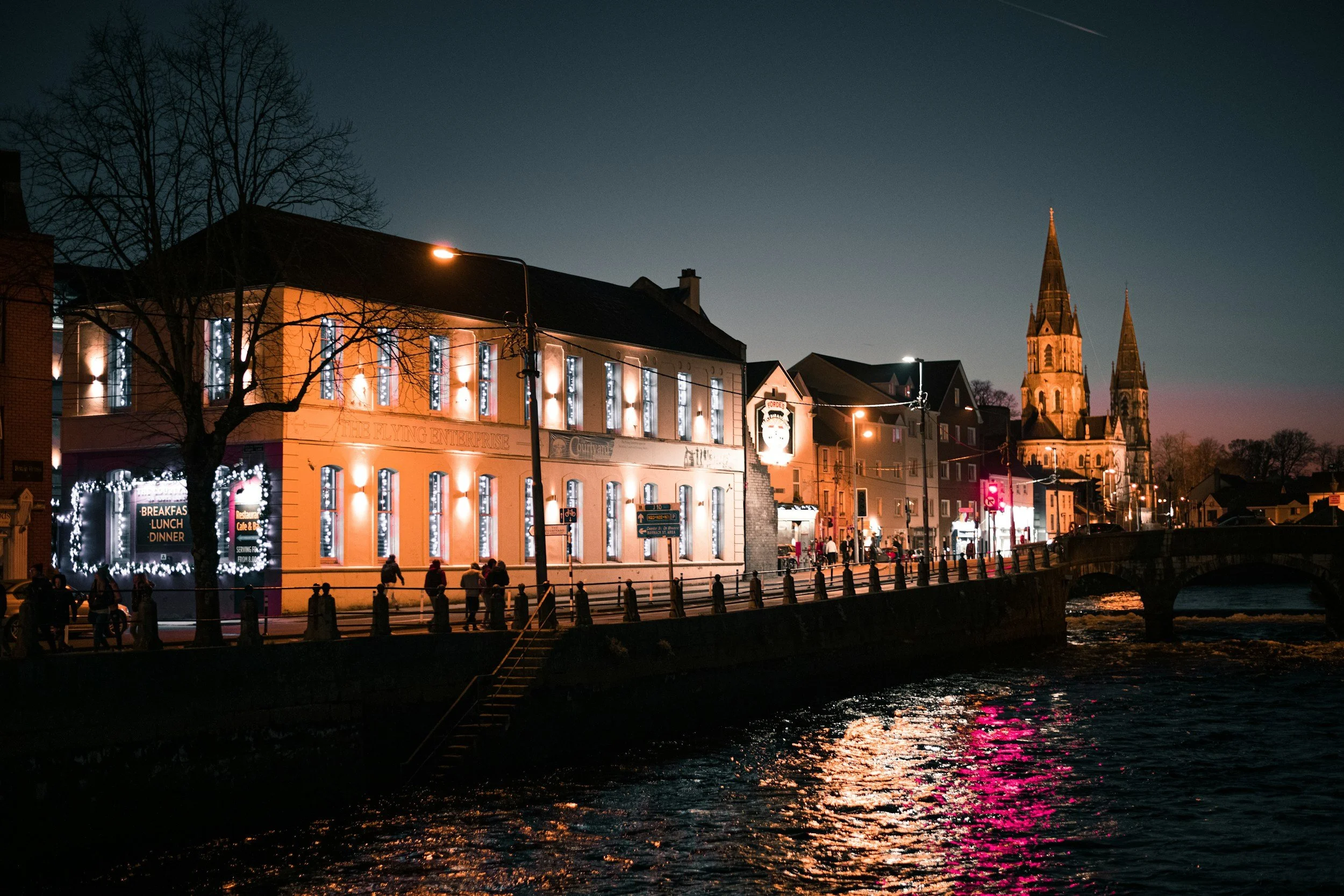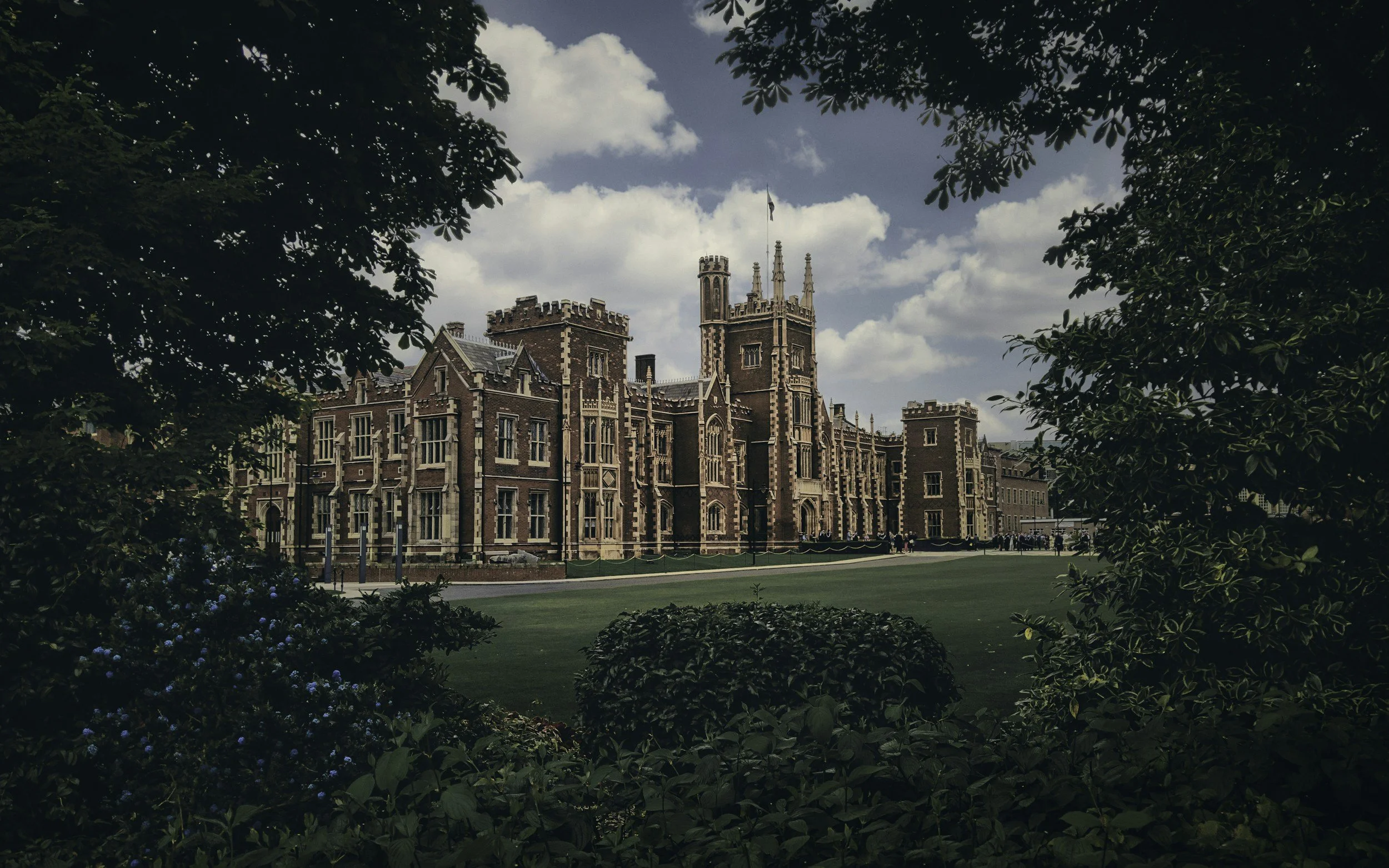Beyond Dublin: Irish Cities Your Clients Should Consider
Dublin's great. Your clients will love it. But here's what happens when they spend their entire Irish trip in the capital: they miss the Ireland that feels most like Ireland.
When clients say they want to visit Ireland, most are picturing something beyond Temple Bar and the Guinness Storehouse. They're imagining colorful streets, live traditional music spilling out of pubs, coastal drama, and that slower pace they've heard about. Dublin delivers on some of this, but Cork, Galway, and Belfast deliver it differently, and often more memorably. These cities give your clients the urban experience they want with better access to the landscapes, culture, and experiences that made them want to visit Ireland in the first place. Here's what each city offers and which clients they're right for.
Cork: The Food Lover's Base Camp
it feels more like a large town with a serious food scene and zero pretension. The English Market has been operating since 1788, and it's still the kind of place where locals do their actual shopping. Your clients can grab coffee, sample farmhouse cheese, and watch fishmongers work without feeling like they're on a tourist attraction tour.
The city itself is walkable, built on islands in the River Lee, with enough Georgian architecture and colorful storefronts to satisfy the "this looks like Ireland" requirement. Saint Fin Barre's Cathedral is worth a stop, and the Cork Butter Museum is oddly fascinating for the right client (the ones who actually read historical plaques).
Why Cork Works:
Cork is your strategic positioning point for the southwest. Blarney Castle is 15 minutes away. Kinsale, one of Ireland's best food towns, is 30 minutes south. Cobh (the Titanic's last port of call) is 25 minutes east. The entire southwest coast, from Kinsale to the Ring of Kerry, becomes accessible without the longer drives from Dublin.
The city has a legitimate restaurant scene. Ichigo Ichie earned a Michelin star, but you've also got Market Lane, Elbow Lane, and Paradiso for clients who care about where they eat but don't need the formality. The Crawford Art Gallery sits above a good café, so you can build in a low-key cultural stop that doesn't feel like homework.
Best For:
Clients who mention food when they talk about travel. Couples who want a mix of city time and countryside access. Anyone planning to spend serious time on the southwest coast who'd rather not backtrack to Dublin. Travelers who prefer authentic local experiences over capital-city tourism.
What to Actually Do:
A morning at the English Market, a walk through the city center and along the river, an afternoon trip to Blarney Castle or Cobh, dinner at one of the city's standout restaurants. Cork also makes a solid overnight stop on a longer itinerary, breaking up the drive between Killarney and Waterford or Dublin. It's functional and interesting, which is exactly what you need in the middle of a longer trip.
Galway: The Traditional Music Hub
Galway is the city clients picture when they think about Irish culture. It's compact, walkable, and genuinely fun. The Latin Quarter (yes, they call it that) is a cluster of narrow streets packed with pubs, restaurants, shops, and street performers. On a good night, you can hear live traditional music in half a dozen pubs without planning ahead.
The city sits on the edge of Galway Bay, and the Salthill Promenade gives clients an easy coastal walk when they need a break from the shops and pubs. The Spanish Arch and Galway Cathedral provide some historical context, but let's be honest: clients come to Galway for the atmosphere, not the monuments.
Why Galway Works:
Galway is your access point for the west coast. The Cliffs of Moher are 90 minutes south. Connemara National Park is an hour north. The Aran Islands are a ferry ride away. Clients can base in Galway and day-trip, or use it as a starting point for a coastal drive that feels more remote and dramatic than anything near Dublin.
The city itself requires no itinerary planning. Tell clients to walk Shop Street, pop into whatever pub has music, eat at Ard Bia or Aniar, and they'll figure out the rest. It's one of those rare cities where "just wander" is legitimate advice. The Galway Market on Saturdays is worth timing a visit around if the schedule allows.
Best For:
Clients who want traditional Irish culture without it feeling manufactured. Music lovers. Younger travelers and honeymooners who want nightlife that isn't Dublin clubbing. Anyone planning to explore Connemara, the Cliffs of Moher, or the Aran Islands. Clients who prefer smaller, walkable cities to major capitals.
What to Actually Do:
Walk the Latin Quarter and Shop Street, stop in at least two pubs with live music (Tigh Cóilí and Taaffes get recommended a lot, but honestly, follow your ears), visit the Galway Market if it's Saturday, take the Salthill Promenade walk for views of Galway Bay. If clients have time, a day trip to the Cliffs of Moher or Connemara makes Galway even more valuable as a base.
Galway also works beautifully in a self-drive itinerary. The drives in and out of the city are scenic, parking is manageable, and clients can easily explore the surrounding areas at their own pace.
Belfast: The Unexpected Highlight
Belfast surprises people. Clients often add it as an afterthought, and it ends up being a trip highlight. The city has energy. It's grittier than Dublin, more industrial in its bones, but it's also more affordable, less crowded, and genuinely interesting from a historical perspective.
The Titanic Belfast museum sits on the actual site where the ship was built, and it's one of the best museum experiences in Ireland or the UK. It's large, well-designed, and thoroughly engaging even for clients who aren't history obsessives. The political murals in West Belfast provide context for the Troubles, and black cab tours offer a respectful, informative way to understand that period without sensationalizing it.
The Cathedral Quarter has the city's restaurant and pub scene. The Crown Liquor Saloon is a Victorian gin palace worth a stop just to see the interior. St. George's Market (Friday through Sunday) is excellent for food, local crafts, and people-watching.
Why Belfast Works:
Belfast opens up Northern Ireland and makes the Causeway Coast accessible. The Giant's Causeway is about 90 minutes north. Carrick-a-Rede Rope Bridge, the Dark Hedges (yes, from Game of Thrones), and the Bushmills Distillery are all in the same area. You can do the whole Causeway Coast as a long day trip from Belfast, or split it into a more relaxed overnight.
Belfast also works as a cross-border addition to a Republic of Ireland itinerary. Clients can drive from Galway or Dublin, spend two nights in Belfast, explore the Causeway Coast, and either loop back or continue into Scotland via ferry (there's a route to Cairnryan in Scotland). It adds variety to an itinerary without adding complexity.
Best For:
History-focused travelers, especially anyone interested in 20th-century history or the Titanic story. Clients planning to visit the Giant's Causeway. Travelers who want a less touristy Irish city experience. Anyone combining Ireland and Scotland in one trip (the ferry connection makes this seamless).
What to Actually Do:
Half a day minimum at Titanic Belfast. A black cab tour of the political murals (book a guide who lived through the Troubles for real perspective). Walk the Cathedral Quarter, stop at the Crown Liquor Saloon, visit St. George's Market if the timing works. A full-day trip to the Causeway Coast covers the Giant's Causeway, Carrick-a-Rede, and usually a stop at Bushmills or the Dark Hedges.
Belfast also pairs well with a driver-guide for clients who want the historical and political context explained as they go. The city's history is complex, and a good guide makes it accessible and meaningful.
How to Use These Cities in Your Itineraries
None of these cities need to replace Dublin. They work alongside it or instead of it, depending on what your clients want. A week in Ireland could be three nights in Galway with day trips to Connemara and the Cliffs, two nights in Belfast for the Causeway Coast, and two nights in Dublin. Or skip Dublin entirely and base in Cork and Galway for a slower-paced trip focused on the west and southwest coasts.
For clients who want "the real Ireland," these cities deliver it more naturally than Dublin does. For clients who want to cover ground, these cities provide better access to the regions that make Ireland worth visiting. And for clients who want a mix of urban and rural, these cities give you the flexibility to build itineraries that don't feel rushed or repetitive.
We know these cities inside and out. We've got relationships with properties, drivers, and guides in Cork, Galway, and Belfast, and we can build itineraries that make the most of what each city offers. When your clients are ready to go beyond Dublin, we'll make sure they end up in the right place.
Plan with North + Leisure
We partner with advisors to turn UK & Ireland briefs into calm, custom trips. You bring the relationship; we bring room-by-room guidance, rail-where-it-saves-time and private driver-guides where it shines, smart pacing, and an on-the-ground safety net. Hand us the brief and we’ll return a white-label plan that feels effortless and reads like your client.
Let’s design a UK & Ireland itinerary your clients will rave about.



